Having good soil structure is crucial for growing a healthy garden, but most of us are not blessed with perfect humus (see pie chart below). Often we’re starting with poor soil structure that we need to keep amending over time to achieve that perfect blend of sand, silt, clay and organic matter.
Recently I helped a friend get their garden prepped for the season. They have four raised beds filled with heavy clay soil. That is a challenging environment for vegetables because the soil is so compacted. They have a hard time digging their roots down and there is very little room for water retention. Microbes have a difficult time living in the soil because there are no pockets of oxygen and water for them feed off.
The solution is simple: add compost. Lots and lots of compost. Compost has a great combination of both chunky and fine particles, which will help balance the clay soil into a more ideal structure. It also has a massive load of nutrients that will help keep the vegetables healthy.

Choose an all-natural fertilizer with a diverse range of ingredients. Your vegetables will thank you for the trace minerals and nutrients.
The fastest way to fix the problem is also the most expensive way: buy a huge load of fully composted organic matter. That can be anything from mushroom compost to manure – ideally a mix of several sources so you get a balanced load of nutrients in the soil. Turn it into the soil, possibly with some sand, and your beds will have great structure.

Compost is a great strategy for improving poor soil. It brings in a ton of nutrients, as well as better structure with it’s small and large particles.
The slow way to fix this is the most economical: make your own compost at home from your garden and kitchen scraps. It takes compost piles several months to break down fully and you may still need to add a bag or two of sand to get the right consistency.
For my friend’s garden, we did a compromise of these two options: we bought a few bags of compost for this season and are planning on the long term solution being a home compost system.

For an immediate effect, turn the compost into poor soil to prep it for planting.
This is where the great workout begins! We attacked the four raised beds with a shovel and began breaking up all that hard clay. We dumped 1-2 bags of compost in each bed, turning it in like we were mixing a big cake.
The benefit of turning the compost into the soil is that the new, organic matter is evenly distributed. Immediately the soil consistency has improved. There are now pockets for air and water retention, plus lots of nutrients for the microbes and spring vegetables to munch on.
The downside of turning the soil this much is that weed seeds that were once buried are now exposed to light, which means there may be more weeds in the garden for the short term.

Tomato happily planted in the raised beds
We’ll have to keep adding compost to fully remedy how heavy the soil is, but I’m confident the amount we added is enough to have a really productive garden this season. What kind of soil struggles do you have on your homestead? Have any advice to share on how you’ve dealt with poor soil? Tell me about it in the comments below!
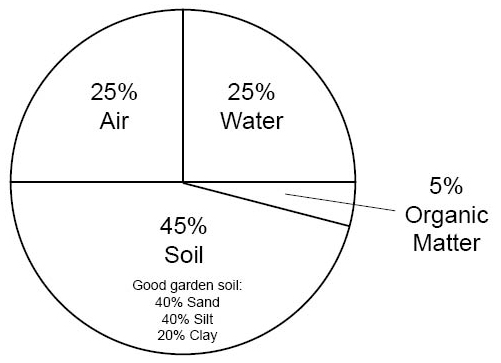

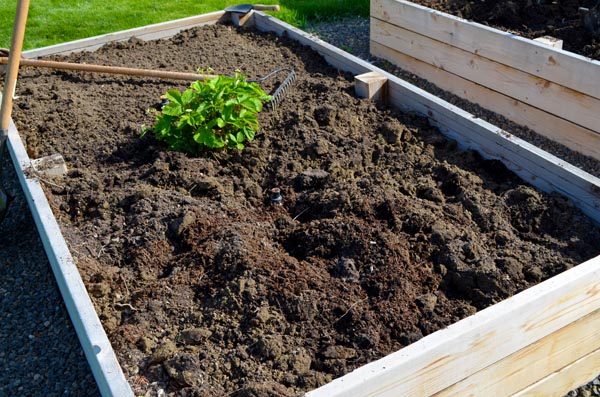
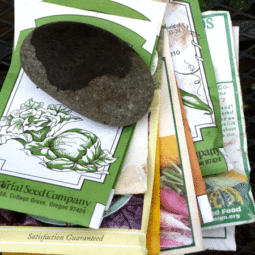
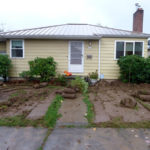
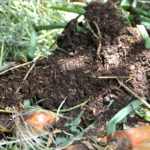


I planted a little bitty crepemyrtle in my clay-heavy (Maryland) soil this spring. First, I dug a hole a foot deep and a bit over a foot wide for this little twig of a thing (seriously, one 5″ tap root). I broke up the clay lumps with my fingers and tossed them back in, alternating every 2 inches or so with Harvest Garden Pro’s clay breaker soil conditioner. Then I planted it. Elsewhere in my yard, natural ponds form in low spots because the soil drains so poorly. The spot where that little crepemyrtle is planted will happily soak in a gallon of water, though!
Really enjoy all your gardening posts. May I ask which brand of compost did you use? I really like the ingredients on it, and will like to purchase that same brand.
Angela, this was from too long ago for me to recall the brand! Selection tends to vary quite a bit from one store to another anyway. I would ask your best local nursery for organic recommendations.